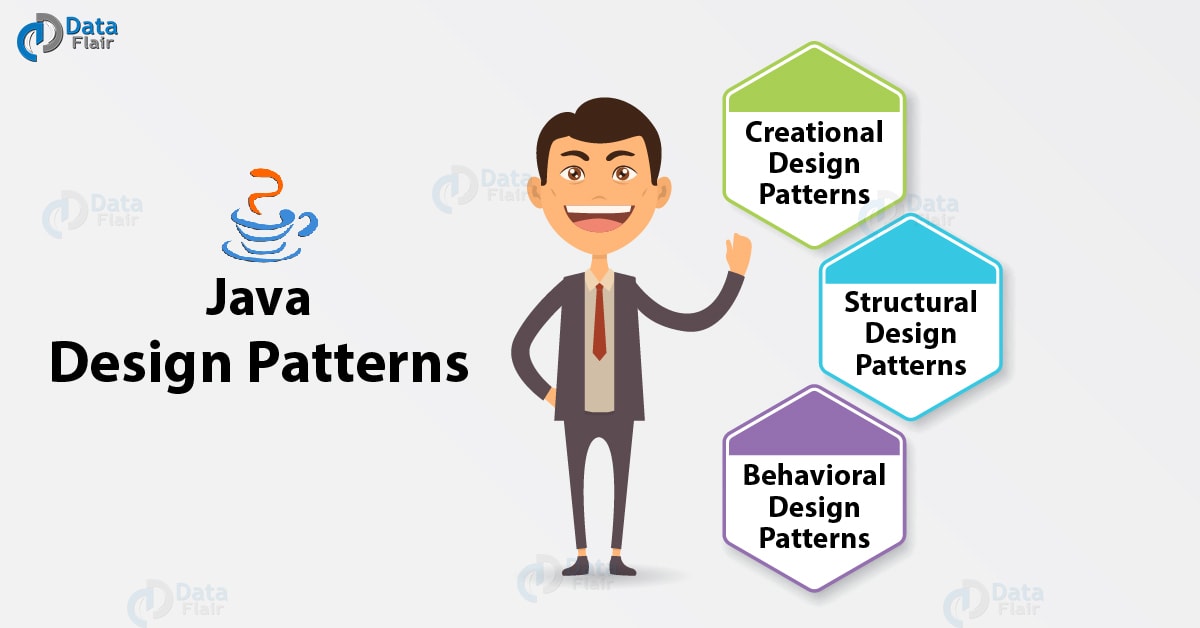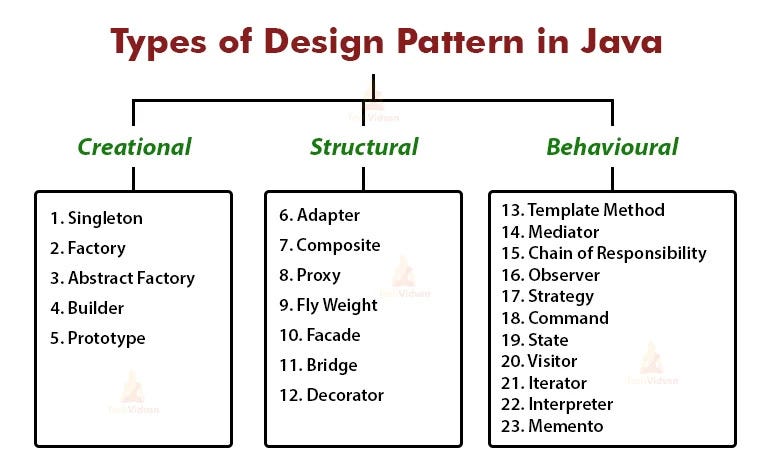
Introduction
Overview of Java Design Patterns
Java design patterns are proven solutions to recurring problems in software design. They serve as a foundation for building robust, maintainable applications. Think of design patterns as frameworks that guide developers in structuring their code efficiently. With a wealth of design patterns available, each addressing specific challenges, developers can select the right pattern based on application needs. These patterns can be broadly categorized into three types: creational, structural, and behavioral, each offering unique strategies for designing software.
Benefits of Implementing Design Patterns
Adopting essential Java design patterns provides several advantages:
- Enhanced Code Reusability: Design patterns promote the reuse of existing solutions, reducing the need to reinvent the wheel.
- Improved Communication: Using a common language for describing design approaches helps teams communicate ideas effectively.
- Increased Flexibility: Well-implemented design patterns allow easy modifications, fostering adaptability as requirements evolve.
- Higher Quality Code: By following best practices, developers create cleaner and more organized codebases.
As a software engineer, I’ve witnessed firsthand how leveraging design patterns accelerates project timelines and enhances collaboration, making it an invaluable resource in any developer’s toolkit.

Creational Design Patterns
Singleton Pattern
The Singleton Pattern ensures a class has only one instance and provides a global point of access to it. Imagine a logging service that should be consistently accessed throughout your application. By implementing the Singleton Pattern, you can control the instantiation process, ensuring that the same instance is used everywhere. It’s a great way to manage shared resources like database connections or configuration settings.
Factory Method Pattern
Next, let’s explore the Factory Method Pattern. This pattern defines an interface for creating objects but allows subclasses to alter the type of objects that will be created. Picture a scenario where you are building different types of documents. Instead of hardcoding the logic for creating those document types, you can delegate that responsibility to individual factories. This promotes loose coupling and enhances the code’s maintainability.
Abstract Factory Pattern
Lastly, the Abstract Factory Pattern expands on the Factory Method Pattern by providing an interface for creating families of related or dependent objects. Consider the development of a cross-platform UI; you can use the Abstract Factory to ensure that you generate UI components that are consistent across platforms, delivering a cohesive user experience.
These creational patterns not only help streamline object creation but also enable greater flexibility and control within your application.

Structural Design Patterns
Adapter Pattern
Structural design patterns focus on how classes and objects are composed to form larger structures. One key example is the Adapter Pattern. Imagine you have a legacy system that you need to integrate with a new application. The Adapter Pattern allows the incompatible interfaces to work together by wrapping the existing interface in a new one. This way, you can seamlessly use the legacy code without altering its structure.
Decorator Pattern
Moving on, the Decorator Pattern facilitates adding new functionality to an object without altering its structure. It’s a game-changer for enhancing objects dynamically. For instance, if you were developing a coffee shop application, you could use the Decorator Pattern to add extras to a coffee order, like milk or syrup, without creating subclasses for each possible combination. This ensures your code remains clean and easily extendable.
Composite Pattern
Lastly, the Composite Pattern is perfect for working with tree-like structures. By treating individual objects and compositions uniformly, it simplifies client interaction. Think of organizing a company’s employees: you can have individual “Employee” components alongside entire “Department” composites. This pattern allows clients to manage groups of objects in a consistent way, fostering a simpler codebase that mirrors real-world relationships.
Understanding these structural patterns will empower developers to design more flexible systems that can adapt to changing requirements with ease.

Behavioral Design Patterns
Strategy Pattern
Behavioral design patterns are concerned with how objects interact and communicate with one another. A prime example is the Strategy Pattern, which defines a family of algorithms, encapsulates each one, and makes them interchangeable. This allows the algorithm to vary independently from the clients that use it. For instance, when developing a sorting application, you might have different sorting strategies—like Quick Sort and Merge Sort. Using the Strategy Pattern lets you easily switch sorting algorithms without modifying the sorting codebase.
Observer Pattern
Another impactful pattern is the Observer Pattern. This establishes a one-to-many dependency between objects, enabling one object (the subject) to notify multiple observers of state changes. Think of a weather station as a subject that broadcasts data. Various displays (observers) can subscribe to receive updates. This pattern is incredibly useful for implementing features like real-time notifications or crowdsourcing updates, ensuring that all dependent components stay current with minimal effort.
Chain of Responsibility Pattern
Finally, the Chain of Responsibility Pattern allows multiple objects to handle a request without the sender needing to know which object will ultimately process it. It’s like passing the baton in a relay race—each handler gets a chance to process the request, allowing for greater flexibility in handling requests. An example might be a customer support system where requests are passed through tiers of support until one tier can address the issue effectively.
Understanding these behavioral patterns can greatly enhance the way developers design communication flows within their applications, leading to cleaner and more maintainable code.

Implementing Design Patterns in Java Applications
Practical Examples and Use Cases
Implementing design patterns in Java applications can significantly streamline the development process. For instance, let’s consider the Singleton Pattern in a logging service. By ensuring that only one instance of the logger exists, developers avoid issues related to multiple logging outputs:
public class Logger {
private static Logger instance;
private Logger() {}
public static synchronized Logger getInstance() {
if (instance == null) {
instance = new Logger();
}
return instance;
}
}Another example is the Factory Method Pattern, often used when creating objects without specifying the exact class. This is particularly useful in the context of GUIs where components may vary based on the environment or user preferences.
Best Practices for Integration
When integrating design patterns into your Java applications, keep these best practices in mind:
- Keep it Simple: Use patterns only when they add value. Over-complicating your design can lead to confusion.
- Documentation: Clearly document the purpose and use of each pattern for future reference and for new team members.
- Refactor Gradually: Introduce patterns incrementally. Refactoring an entire codebase at once can introduce significant bugs.
By embracing these practices, developers can enhance code maintainability and readability, ultimately leading to more successful Java applications.

Anti-Patterns to Avoid in Java Design
Common Mistakes in Design Pattern Implementation
While design patterns can significantly enhance your Java applications, improper implementation often leads to anti-patterns. One common mistake is the overuse of patterns; applying a pattern where it’s unnecessary can complicate your code. For instance, developers may implement the Observer Pattern, even in scenarios where simple event handling suffices. Another frequent pitfall is incomplete implementations. For example, when using the Singleton Pattern, forgetting to make the constructor private can lead to multiple instances, thus defeating its purpose.
How to Refactor Code to Fix Anti-Patterns
Refactoring is crucial in addressing these anti-patterns effectively. Here’s how to approach it:
- Identify Problematic Areas: Regularly review your code for complex sections where patterns have been misapplied.
- Simplify Designs: Remove unnecessary patterns or replace them with simpler alternatives that achieve the same result.
- Isolate Changes: When refactoring, focus on one area at a time. This approach minimizes the risk of introducing new errors.
By recognizing common mistakes and implementing these refactoring strategies, developers can maintain cleaner, more efficient Java applications. This way, they can enjoy the benefits of design patterns without falling into the traps of overcomplication.

Design Patterns and Performance Considerations
Impact of Design Patterns on Application Performance
While design patterns are essential for writing clean and maintainable code, they can also impact application performance, sometimes negatively. For example, the Decorator Pattern, while great for adding functionality, can lead to excessive layering if overused. This can create a performance overhead, as each additional layer introduces more method calls and complexity. Similarly, the Observer Pattern can lead to performance hits if many observers are registered and have heavy processing logic upon changes.
Optimization Techniques for Design Pattern Usage
To mitigate these performance concerns, developers can employ several optimization techniques:
- Profile Before You Optimize: Use profiling tools to identify bottlenecks before making changes.
- Limit Layering: In patterns like Decorator, strive to keep the number of decorators reasonable to avoid performance degradation.
- Asynchronous Processing: For Observer designs, consider processing updates asynchronously, allowing the main application flow to remain responsive.
By understanding the nuances of design patterns and implementing these optimization strategies, developers can achieve both elegant code and effective performance in their Java applications. This balance is crucial for sustaining user satisfaction in performance-critical environments.

Real-World Applications of Design Patterns
Case Studies from Industry
Design patterns aren’t just theoretical concepts—many industries have successfully leveraged them to solve real-world problems. For instance, an e-commerce platform might employ the Factory Method Pattern to create different payment gateways (like PayPal and Stripe) dynamically based on user selection. This modularity allows the platform to easily integrate future payment methods without significant refactoring.
Another compelling example is in mobile app development, where the Model-View-Controller (MVC) pattern is widely adopted. This separation of concerns enhances maintainability by allowing teams to work independently on different components, leading to faster release cycles.
Lessons Learned from Applying Design Patterns
From these case studies, several insights emerge:
- Flexibility: Design patterns can make applications more flexible, allowing for quicker adaptation to changing requirements.
- Team Collaboration: Clear patterns help teams communicate designs, reducing misunderstandings and improving project flow.
- Simplicity Over Complexity: Aim for the simplest solution. While patterns provide structure, unnecessary complexity can hinder development.
These lessons highlight the importance of thoughtful pattern application, ensuring that design solutions truly enhance your application while fostering a collaborative and efficient development environment.

Conclusion
Recap of Key Design Patterns Covered
Throughout this exploration of essential Java design patterns, we delved into various categories—including creational, structural, and behavioral patterns. We examined:
- The Singleton Pattern for ensuring a single instance of a resource.
- The Factory Method Pattern for creating objects without specifying their concrete classes.
- Structural patterns like the Adapter, Decorator, and Composite Patterns that help in building flexible architectures.
- Behavioral patterns such as the Strategy, Observer, and Chain of Responsibility Patterns that enhance communication and flexibility in behavior management.
Importance of Design Patterns in Java Development
Embracing these design patterns can significantly elevate your Java development game. They promote code reusability, enhance maintainability, and foster better collaboration among team members. Throughout my own journey in software engineering, I’ve found that leveraging these patterns not only streamlines problem-solving but also boosts code quality, making projects more manageable over time.
In a rapidly evolving tech landscape, understanding and applying design patterns equips developers with the tools necessary to create robust, scalable applications that can adapt to future challenges. The value of design patterns is undeniable—they are not just concepts but essential frameworks for success in Java development.

